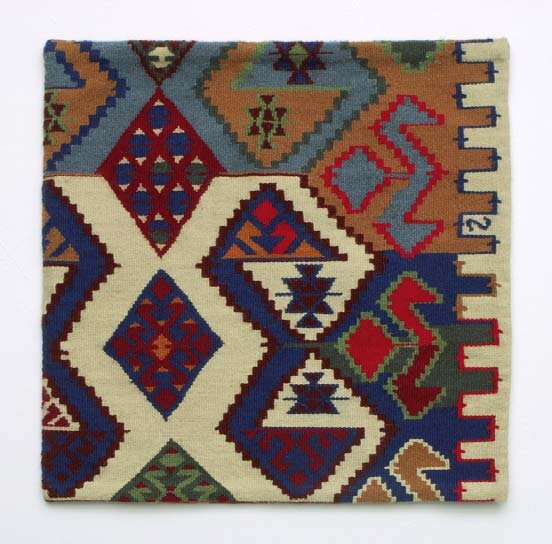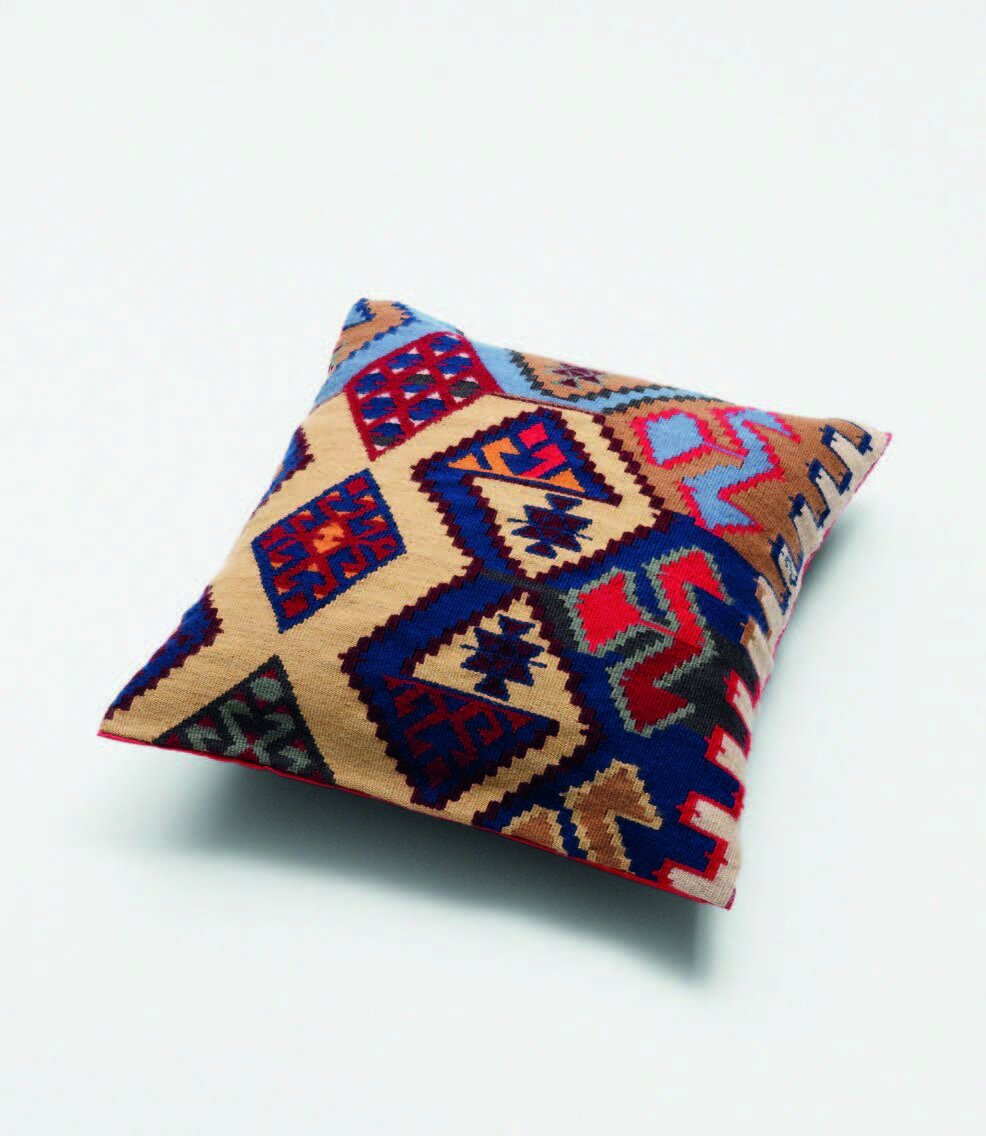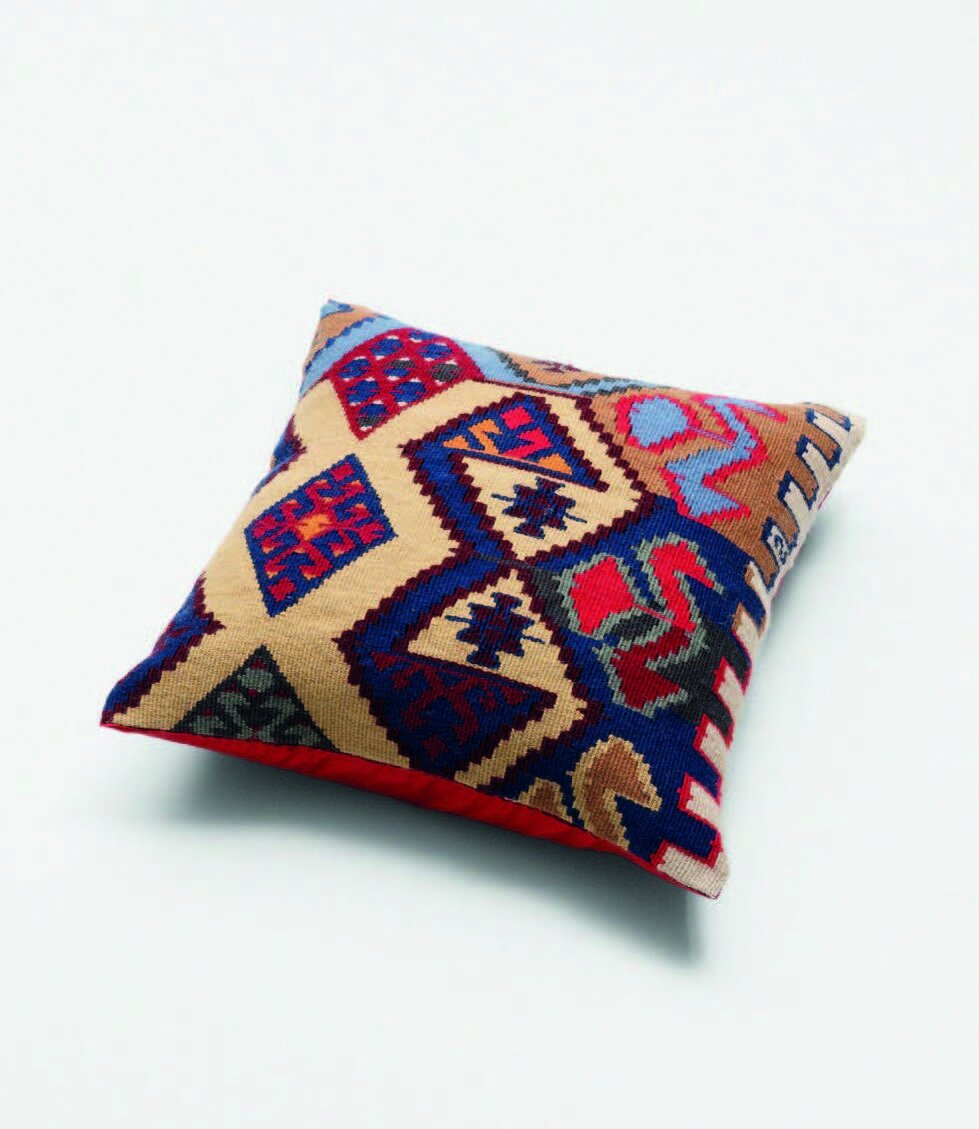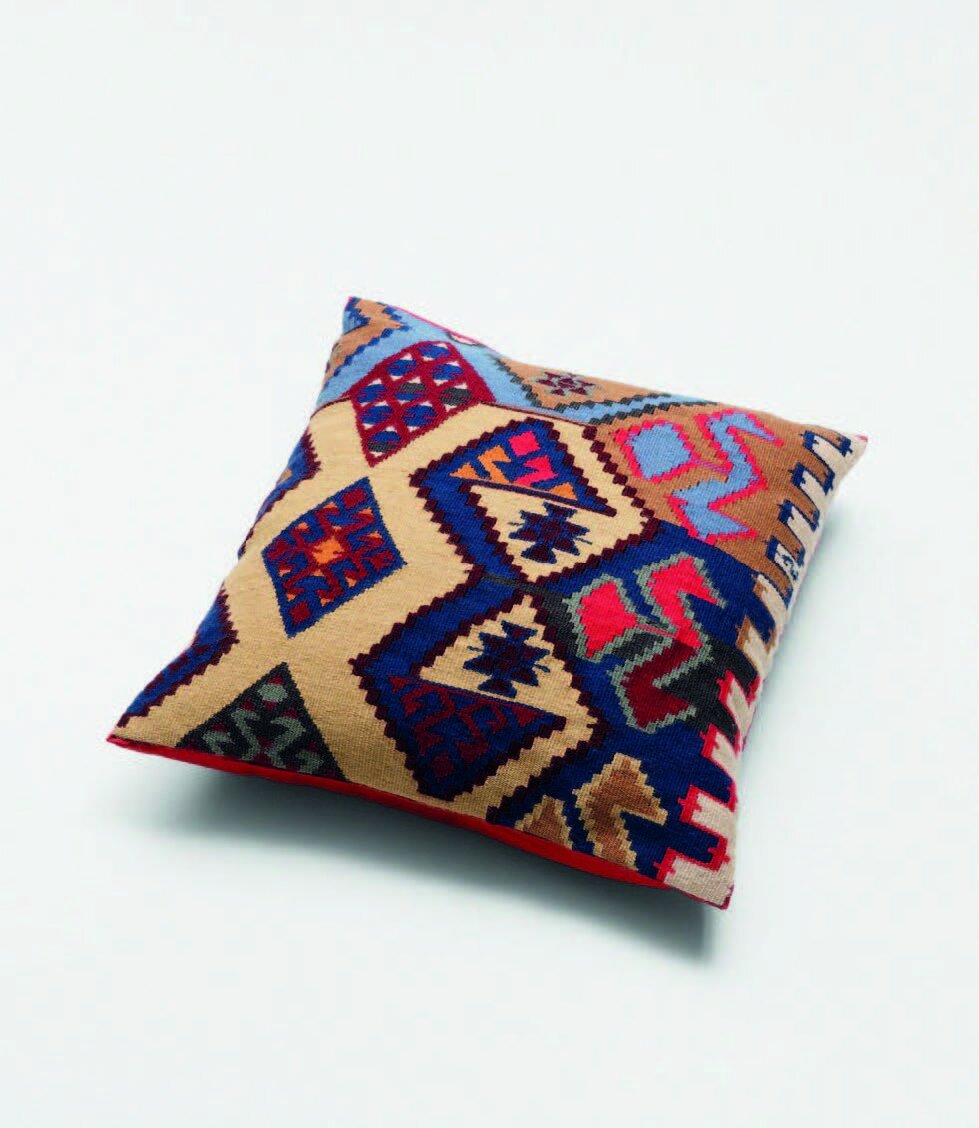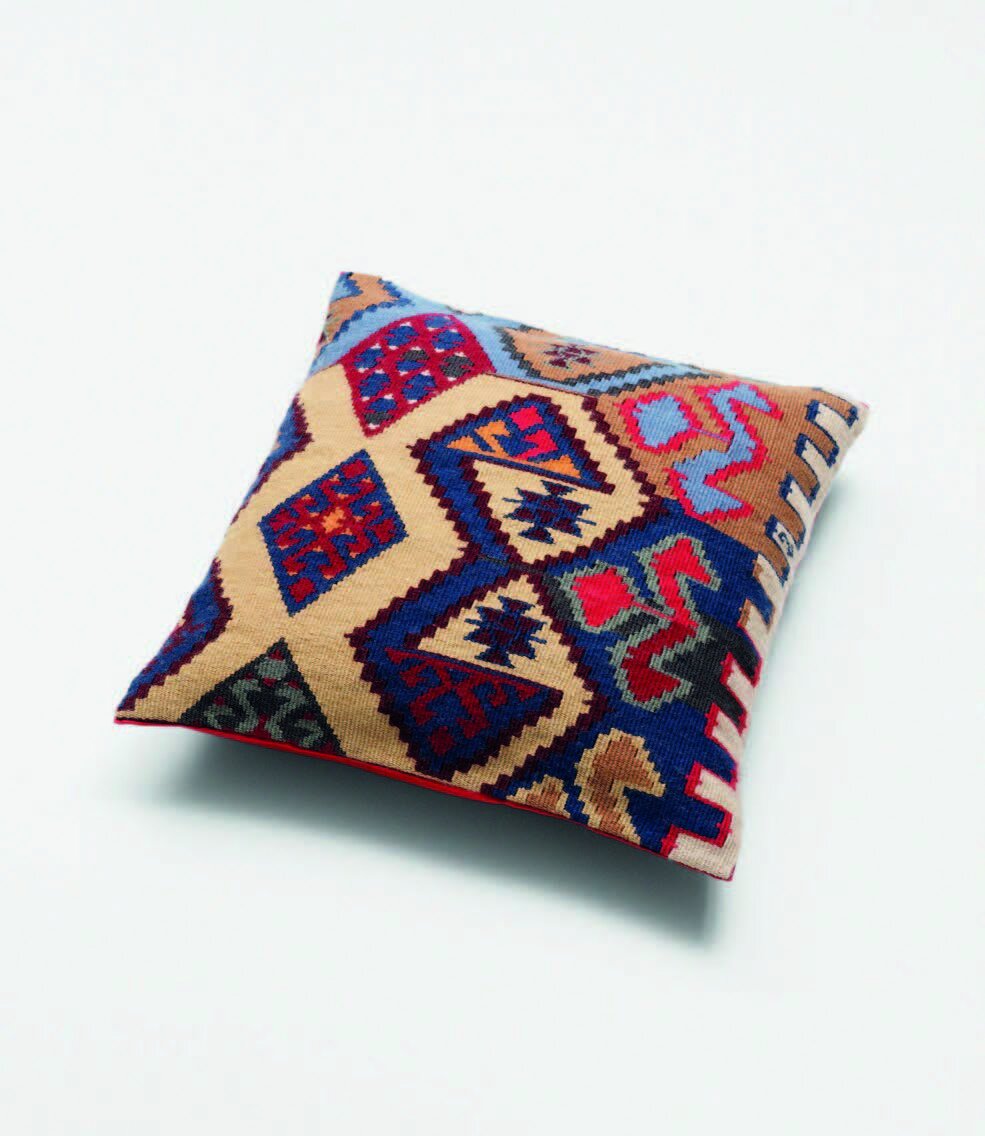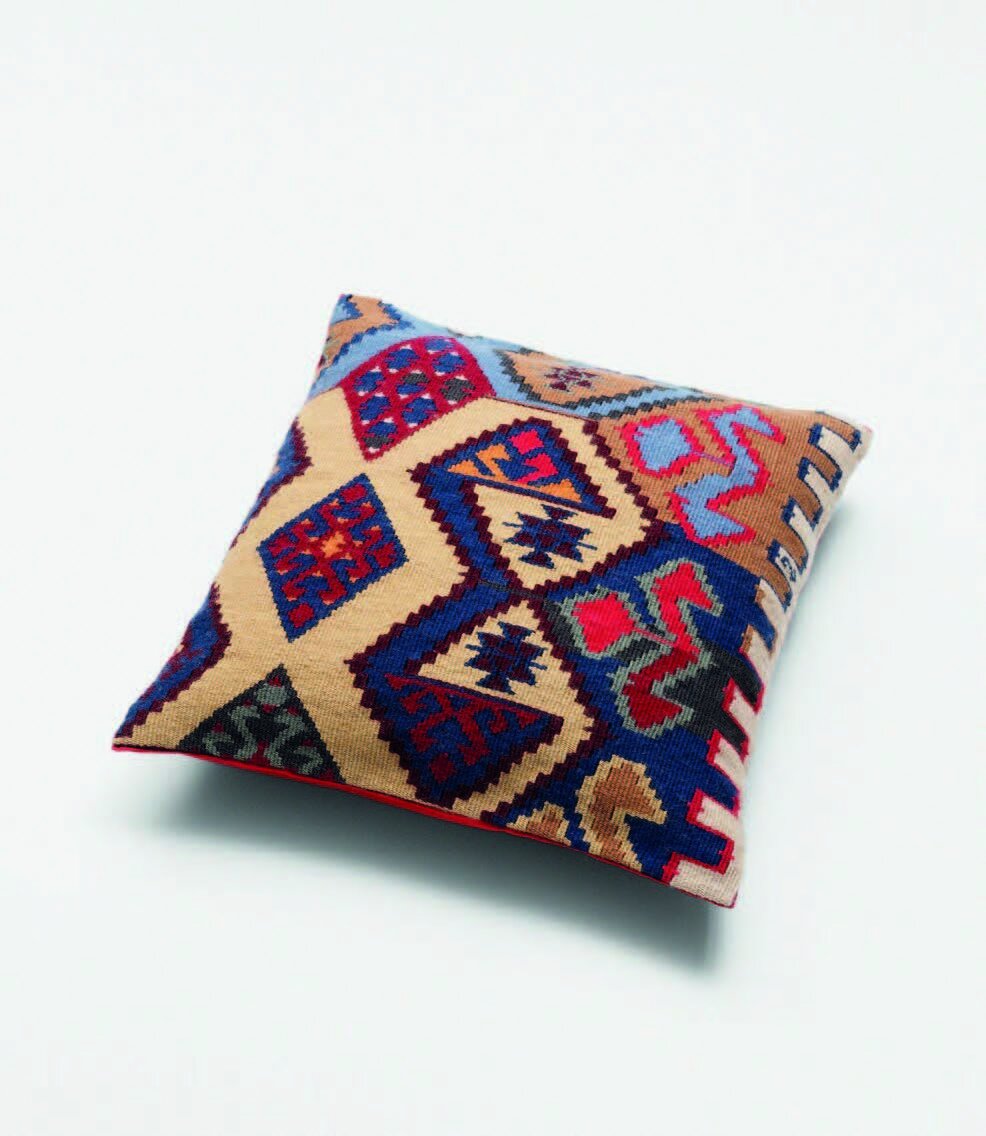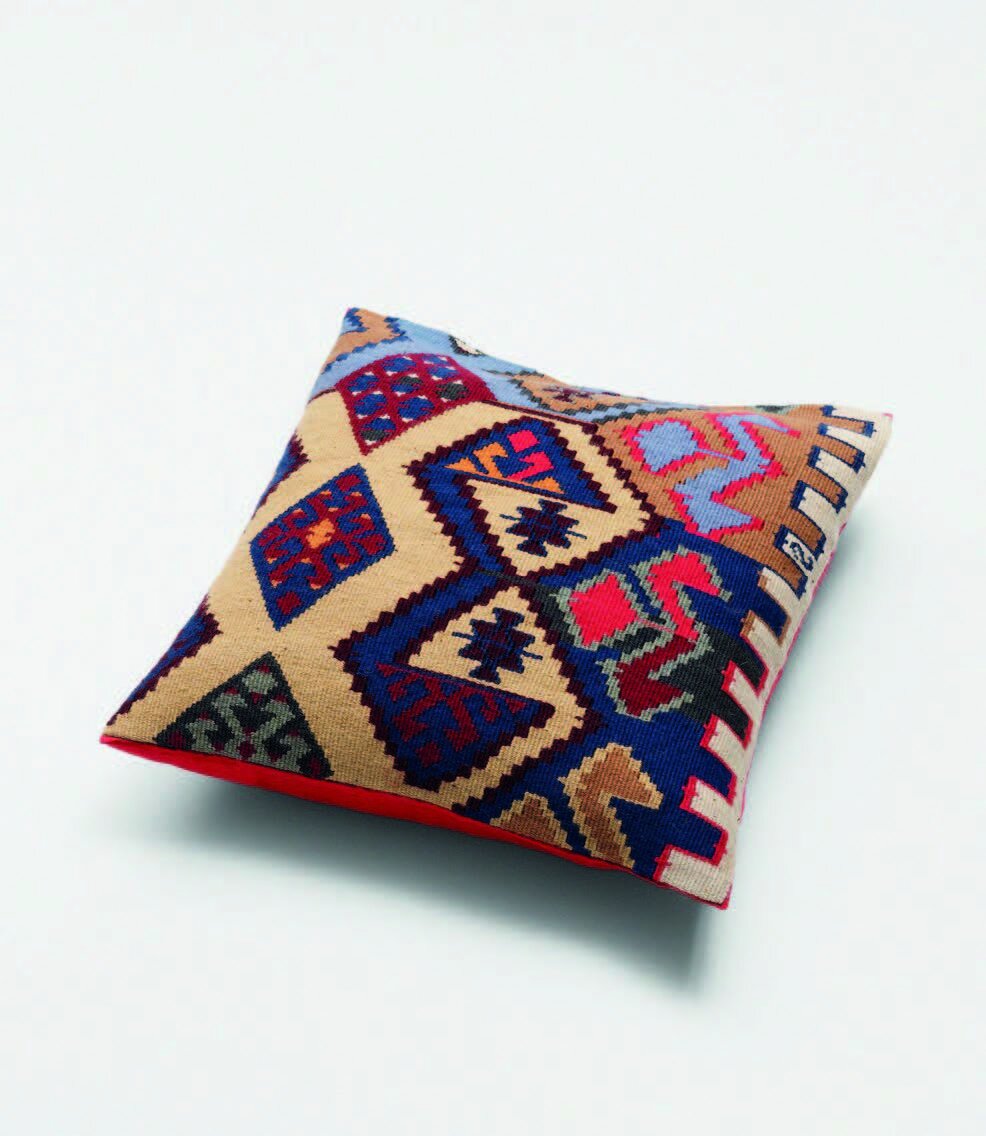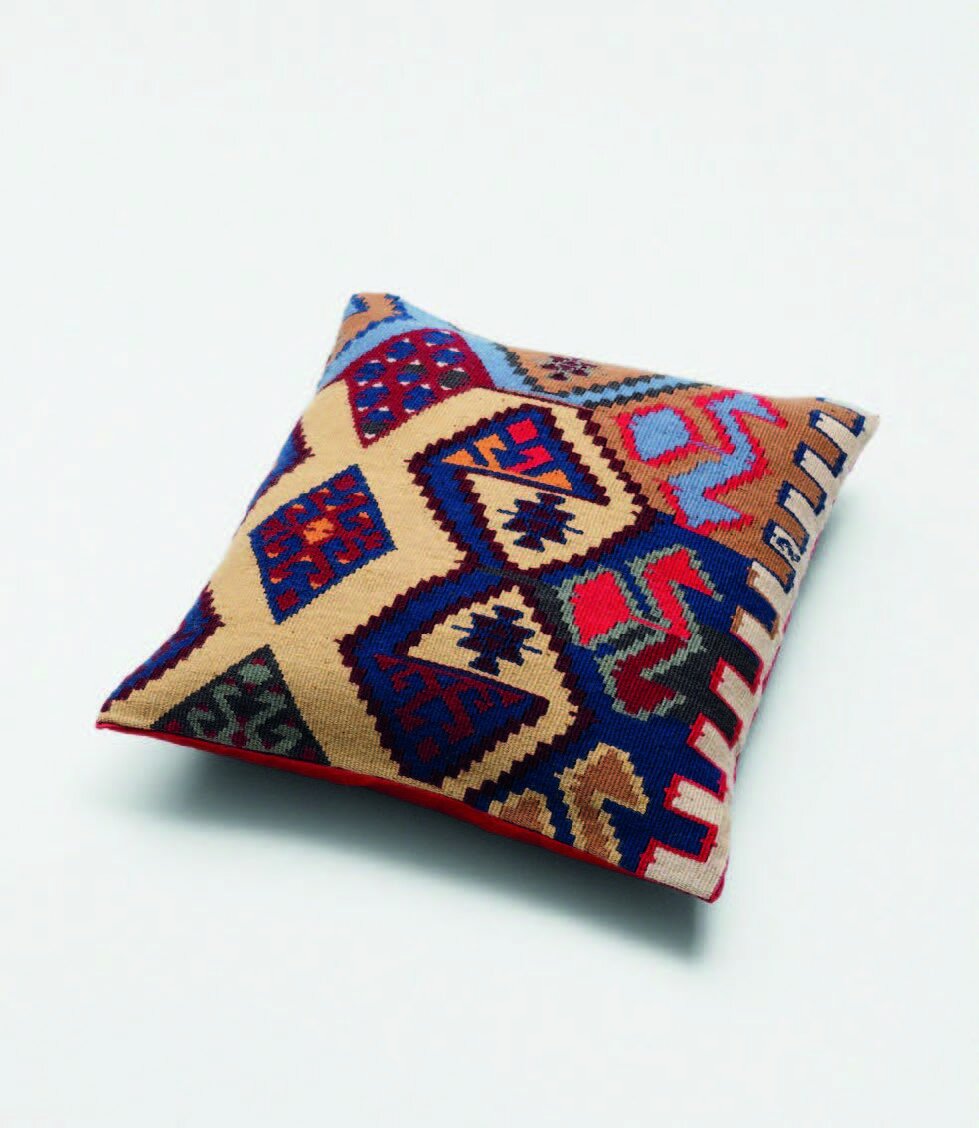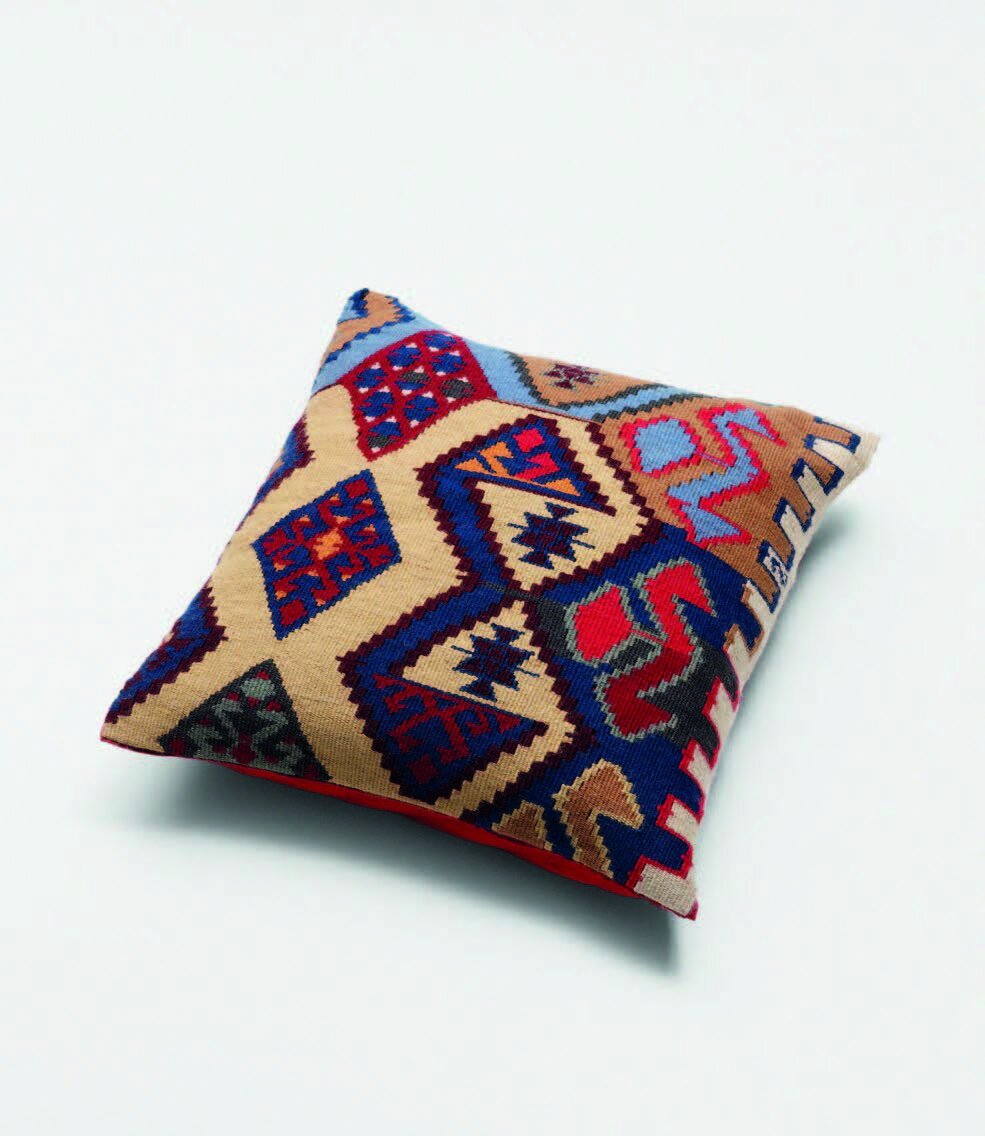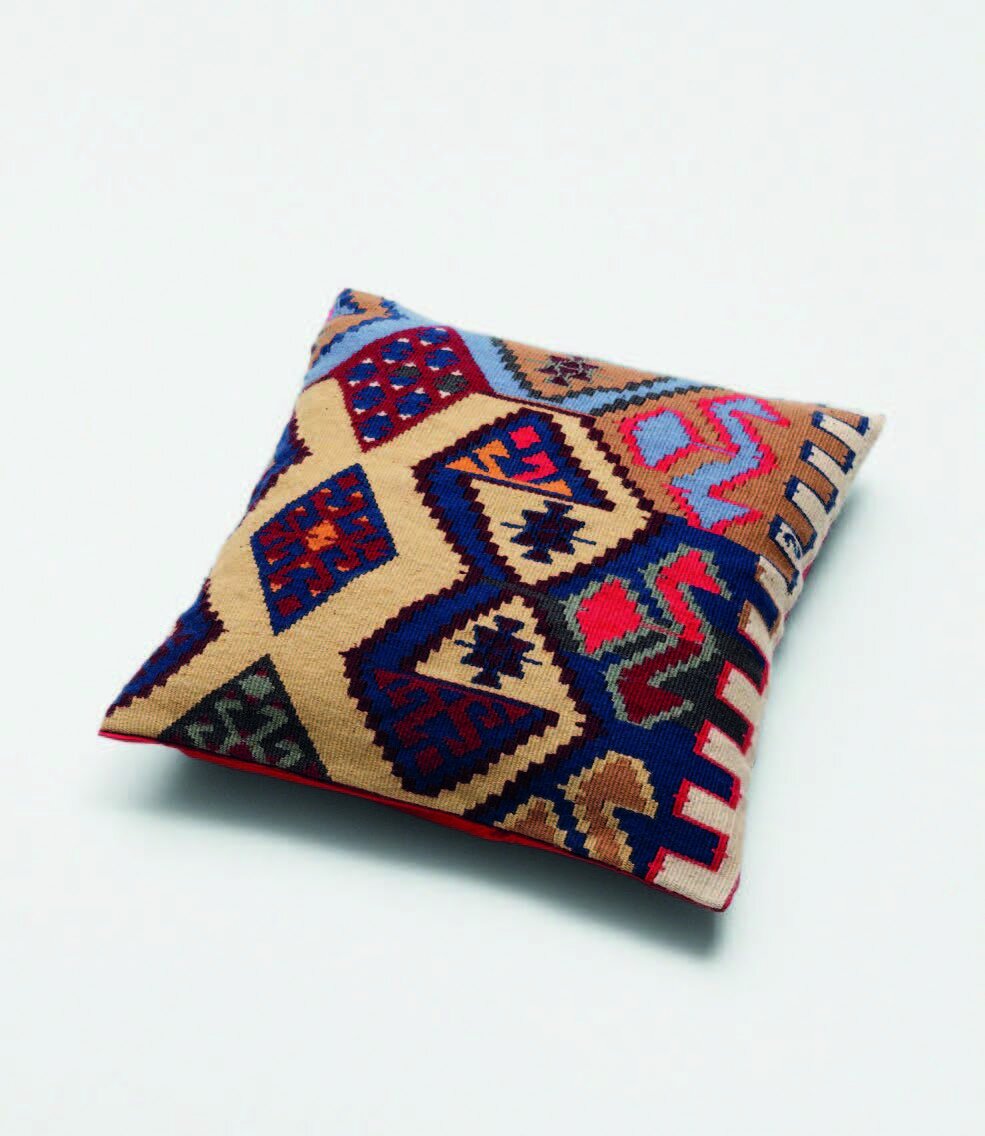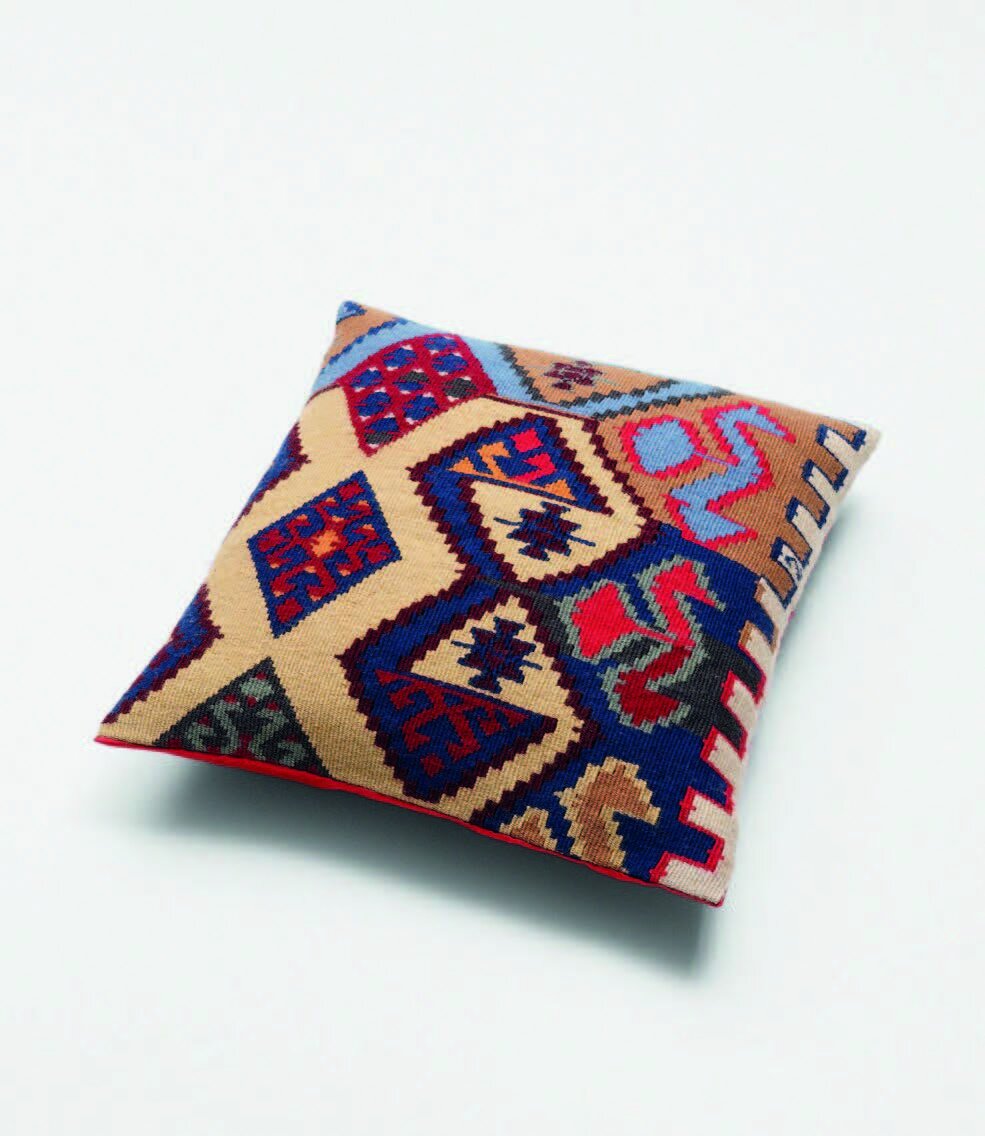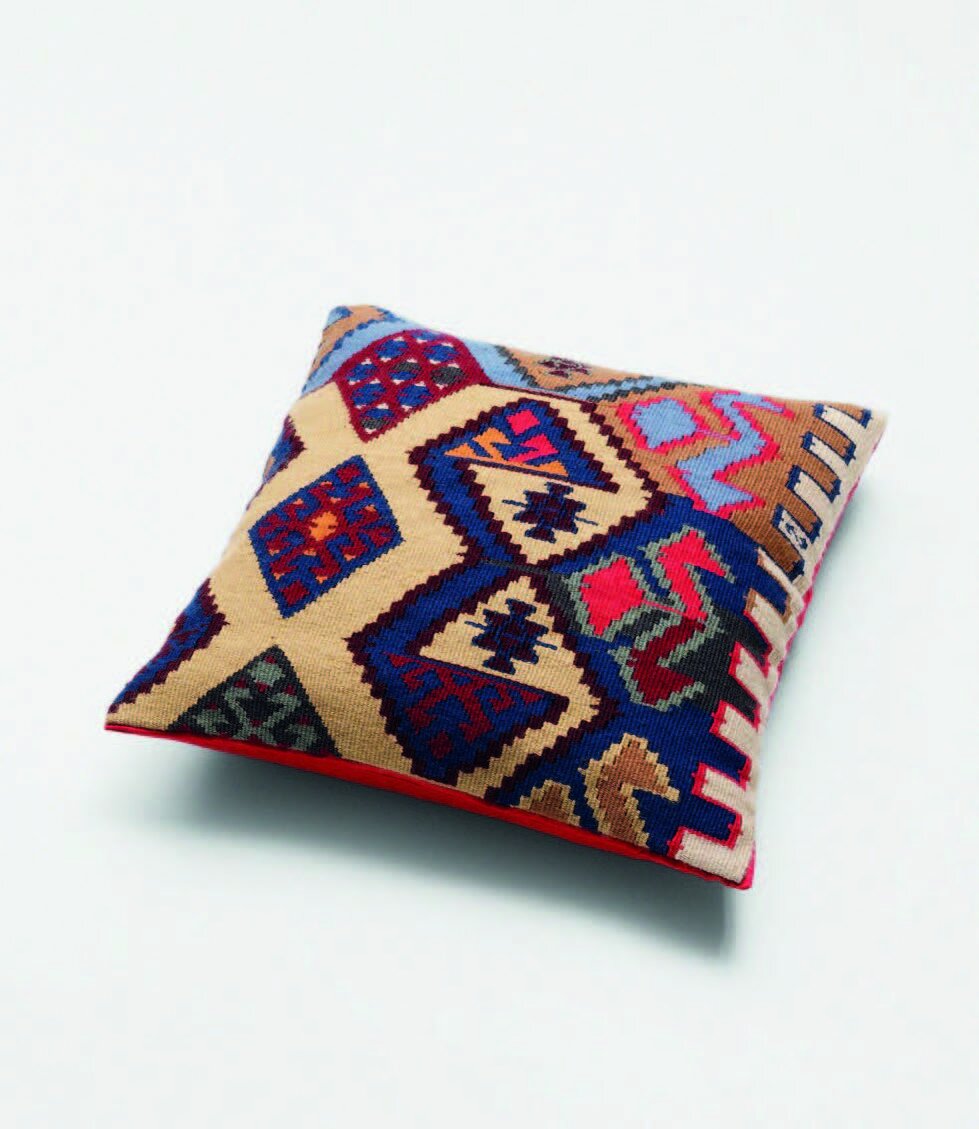Olaf Nicolai | "Georg‘s Pillow (Replica of a pillow from George Lukács’ sofa in his study at Belgrad Kai, Budapest)", 2007 | (for Parkett 78)
Read a Parkett text on Olaf Nicolai
Parkett Vol. 78
Quote from Parkett
“Nicolai uses the license that his status as an artist gives him to be free of academia—free to abuse sources and reconfigure images and objects of entirely different statuses. Thus, while remaining securely within the identity of an artist, Nicolai performs a role as a researcher and combiner—a turner-upside-down-of-things to see what they look like from another angle, and ultimately create new modes of visibility. His strategy, it would seem, is a fine one at this point in our cultural development, given the current moment’s political exhaustion and the universalizing of ‘creativity’ for bland economic ends.”
Chales Esche, Parkett No. 78, 2006
Additional Quote
“Addressing the contemporary world as a landscape of consumption, the conceptual sculptor, video, performance, and installation artist Olaf Nicolai recycles the detritus of Western culture as an ethnologist of alienation. Primary in all of his work is the sense of the bodies of his viewers in historical space and in communion with others. A key component for many of Nicolai’s investigations is the relation of Modernism to political and economic histories, and references have included Le Corbusier, Jean Genet, Ad Reinhardt, Duchamp or in his handwoven pillowcase for Parkett George Lukacs, the Hungarian philosopher.” -Artspace
"Georg‘s Pillow (Replica of a pillow from George Lukács’ sofa in his study at Belgrad Kai, Budapest)", 2007 (for Parkett 78)
Handwoven pillowcase with unique variations, hand-dyed sheep’s wool and red silk,
18 1/2 x 20” (47 x 51 cm), made by the Department of Textiles,
Institute of Applied Arts, Schneeberg,
Germany, Ed. 35/XX, signed and numbered certificate
Read a Parkett text on Olaf Nicolai
Parkett Vol. 78
Quote from Parkett
“Nicolai uses the license that his status as an artist gives him to be free of academia—free to abuse sources and reconfigure images and objects of entirely different statuses. Thus, while remaining securely within the identity of an artist, Nicolai performs a role as a researcher and combiner—a turner-upside-down-of-things to see what they look like from another angle, and ultimately create new modes of visibility. His strategy, it would seem, is a fine one at this point in our cultural development, given the current moment’s political exhaustion and the universalizing of ‘creativity’ for bland economic ends.”
Chales Esche, Parkett No. 78, 2006
Additional Quote
“Addressing the contemporary world as a landscape of consumption, the conceptual sculptor, video, performance, and installation artist Olaf Nicolai recycles the detritus of Western culture as an ethnologist of alienation. Primary in all of his work is the sense of the bodies of his viewers in historical space and in communion with others. A key component for many of Nicolai’s investigations is the relation of Modernism to political and economic histories, and references have included Le Corbusier, Jean Genet, Ad Reinhardt, Duchamp or in his handwoven pillowcase for Parkett George Lukacs, the Hungarian philosopher.” -Artspace
"Georg‘s Pillow (Replica of a pillow from George Lukács’ sofa in his study at Belgrad Kai, Budapest)", 2007 (for Parkett 78)
Handwoven pillowcase with unique variations, hand-dyed sheep’s wool and red silk,
18 1/2 x 20” (47 x 51 cm), made by the Department of Textiles,
Institute of Applied Arts, Schneeberg,
Germany, Ed. 35/XX, signed and numbered certificate
Read a Parkett text on Olaf Nicolai
Parkett Vol. 78
Quote from Parkett
“Nicolai uses the license that his status as an artist gives him to be free of academia—free to abuse sources and reconfigure images and objects of entirely different statuses. Thus, while remaining securely within the identity of an artist, Nicolai performs a role as a researcher and combiner—a turner-upside-down-of-things to see what they look like from another angle, and ultimately create new modes of visibility. His strategy, it would seem, is a fine one at this point in our cultural development, given the current moment’s political exhaustion and the universalizing of ‘creativity’ for bland economic ends.”
Chales Esche, Parkett No. 78, 2006
Additional Quote
“Addressing the contemporary world as a landscape of consumption, the conceptual sculptor, video, performance, and installation artist Olaf Nicolai recycles the detritus of Western culture as an ethnologist of alienation. Primary in all of his work is the sense of the bodies of his viewers in historical space and in communion with others. A key component for many of Nicolai’s investigations is the relation of Modernism to political and economic histories, and references have included Le Corbusier, Jean Genet, Ad Reinhardt, Duchamp or in his handwoven pillowcase for Parkett George Lukacs, the Hungarian philosopher.” -Artspace
"Georg‘s Pillow (Replica of a pillow from George Lukács’ sofa in his study at Belgrad Kai, Budapest)", 2007 (for Parkett 78)
Handwoven pillowcase with unique variations, hand-dyed sheep’s wool and red silk,
18 1/2 x 20” (47 x 51 cm), made by the Department of Textiles,
Institute of Applied Arts, Schneeberg,
Germany, Ed. 35/XX, signed and numbered certificate
Browse unique works from Olaf Nicolai’s edition for Parkett 78:
Artist Document
Olaf Nicolai's edition for Parkett 78 "Georg's Pillow" is based on an actual pillow in George Lukàcs' studio in Budapest, as seen on this photo from the philosopher's home.
Nicolai’s “pillows” for Parkett were each woven by hand on a loom similar to the one pictured above, at the Department of Textiles, Institute of Applied Arts, Schneeberg, resulting in unique variations in each of the works.
Artists’ Contribution to Parkett 100/101


